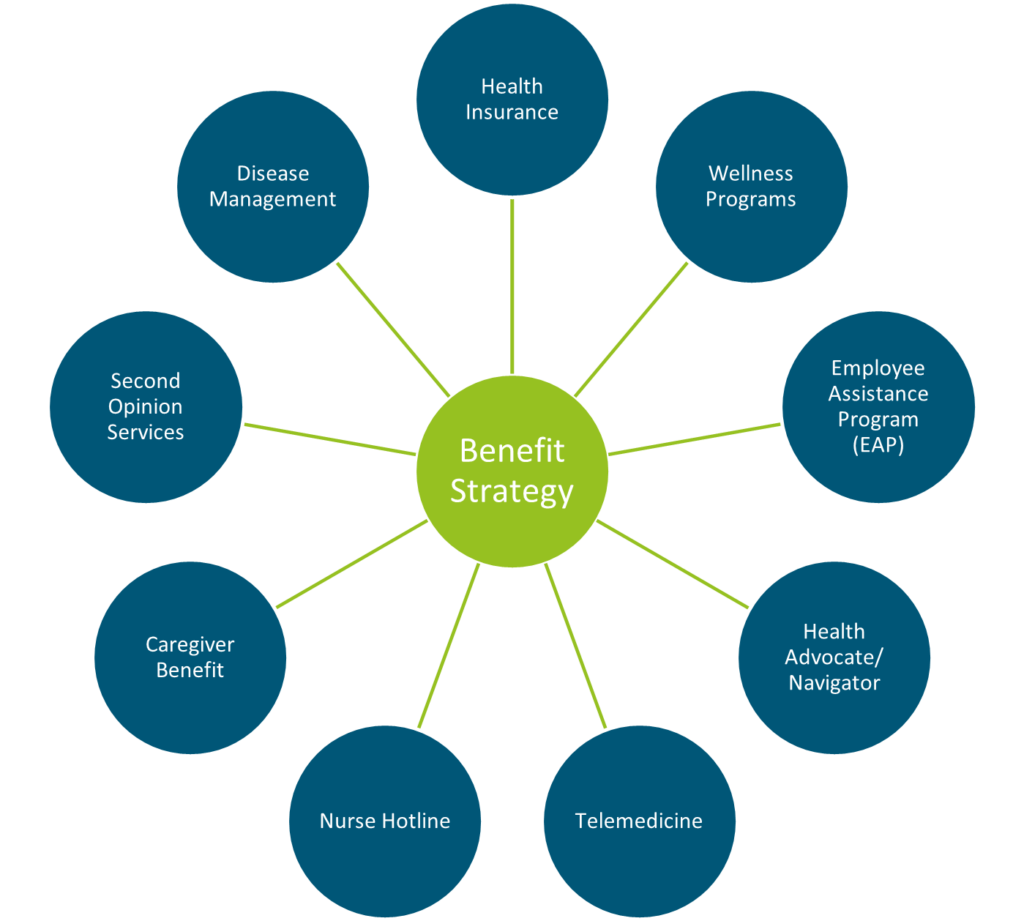Dazed & Confused
Think about your last visit to the doctor. Did you know what questions to ask? Did you leave with a clear picture of the next steps or alternative options? Did you know the cost of your appointment and treatment path before starting it, or what would be covered by your health insurance? If you answered “no” to any of these questions, you are certainly not alone.
Bend Financial[i] recently conducted a survey that showed that only 29% of people were completely confident in their ability to navigate the healthcare system, whereas 56% were entirely confused when it comes to health insurance. Unfortunately, an alarming subset of consumers opt to avoid healthcare completely, too defeated by the complexity.
Beyond health insurance, employees must navigate the suite of benefits offered to them by their employer. While these are meant to provide support, they can cause more confusion when employees are looking for assistance. Employers must consider how introducing a new program or benefit will fit into their overall strategy and integrate the resources, without adding to the complexity employees face.
[i] https://www.bendhsa.com/newsroom/more-than-half-of-americans-confused-by-health-insurance-including-hsas

Breaking Through the Fog
Advocacy tools have popped up as a response to the confusing environment. These tools offer a wide variety of clinical, educational and administrative resources, such as:
- Helping members understand test results or treatment plans
- Advocating for members with complicated conditions and managing their care
- Coordinating care at inpatient facilities
- Identifying top providers
- Arranging second opinions
- Providing information about alternative prescription options
- Assisting employers to understand health risks through biometrics, claims and other data
- Developing customized Employee Assistance Programs (EAPs) or other life coaching services
- Reviewing medical bills and allowing for transparency of costs
- Facilitating prescription drug delivery
- Assisting with wellness goals
- Accessing telemedicine
- Booking appointments and sending reminders
- Optimizing HSA, FSA and HRA accounts
- Integrating with other vendors offered by the employer
The landscape for these platforms is robust and ever-changing. The spectrum of vendors include those that offer:
1. Holistic approach
Major players may provide all of the above features on a one-stop shop model for employees.
2. Preventive approach
Some vendors focus on prevention of common conditions, encouraging employees to get annual eye exams, diabetes screenings, cancer screenings, medication adherence, and more.
3. Targeted approach
This last category of vendors specialize in support for employees with common chronic conditions including diabetes, hypertension and high cholesterol. While likely not the most costly conditions, the potential for savings and member support is significant when factoring in the volume at play. These vendors aim for condition management by giving members the tools to monitor and manage their conditions better on their own, hopefully necessitating less emergency care in the future.
Comparatively, other tools focus only on the highest cost conditions and members, such as cancer diagnoses. Offering a specialized tool for members going through this difficult time enables them to procure the best and most cost-effective care, while also giving them access to resources related to nutrition, mental health, and more. While available on a standalone basis, advocacy solutions may also be accessible to employers through their insurance carriers, Third-Party Administrators (TPAs), or Employee Assistance Programs (EAPs). Programs embedded with a carrier or TPA tend to focus on overall health management programs, disease management and wellness, as well as resolving billing issues and comparing costs of providers. A commonality across platforms is the prioritization of the consumer experience – offering easy, self-service access in mobile apps or online portals. Members typically have a single point of contact at the advocacy company, so they know who to call and do not have to navigate being transferred or having an unfamiliar staff member pick up their case. Overall, for employees, health advocacy platforms may:
- Help them get the most out of their insurance plans and programs
- Cut through the clutter of healthcare
- Promote health and productivity
- Increase preventive behavior
For employers, health advocacy tools can:
- Cause an uptick in employee engagement and satisfaction
- Increase health plan utilization.
- Yield savings in healthcare costs by allowing employers to better understand cost drivers,
- Facilitate the creation of more informed preventative and wellness programs and ultimately lead to a healthier population
Advocacy Adoption: Is It Right For You?
Ultimately, it is up to the employer to determine what programs would best support their employees. Based on the 2020 Integrated Disability Management (IDM) Employer Survey conducted by Spring Consulting Group, 61% of employers offer a health advocacy solution today, compared to only 41% in 2018. Determining which model and which vendor to select can be difficult as there are many players in the market. In assessing whether an advocacy tool would be a good fit for your organization, any decision around advocacy solutions should be tied to program objectives.
- Are you primarily concerned with cost savings?
Health advocacy solutions can provide cost savings to employers or health plans, as they direct employees to access only necessary healthcare services, perhaps at a lower cost facility than they otherwise would have used. A tool like this should, in theory, help avoid bigger, high-cost problems down the road by assisting the employee with addressing issues early. Certain vendors may even offer a cost savings guarantee. However, it will take time to see a possible Return on Investment (ROI). On the flip side, an advocacy solution can encourage greater utilization, such as for behavioral health services. While a higher utilization rate may mean increased claims, giving employees tools to access the services they need can lead to less emergent or high-cost care down the road. As such, you should determine if you are looking for immediate or long-term results.
- Are you looking for higher engagement in your health and benefits plans?
There is a lot of logic behind the argument that an advocacy tool will increase engagement. However, if an employer has had trouble engaging employees in the past, such as in wellness challenges, incentives, education, etc., nothing is guaranteed. Vendors claim that anywhere from 30% to 80% of employees will participate in their program, but this is highly variable based on different aspects of the program and the employer, such as program features or employer incentives.
- Are you focused on population health management?
By equipping members with the necessary tools to make health care decisions based on value and outcomes, better outcomes are achieved. The plan data will guide your decision related to population health management. For example if you are struggling with diabetes specifically, you may want to consider a targeted point solution focused on diabetes management before committing to a more comprehensive program that tends to be more expensive.
- Are you hoping to improve the employee experience?
With an advocacy tool, members have support to mitigate confusion around healthcare services, surprise billing, complex diagnoses…but it only works if members leverage the support. Programs should be communicated often and where possible linked to activity within the plan. We always recommend eliciting employee feedback before launching a program such as this, to ensure you are solving for problems that really exist for employees, instead of problems you think exist for employees. Sometimes our clients even roll out a smaller pilot program as a test before implementing the wider solution for the whole organization.
Most organizations will have a few different goals at play, which are not limited to those listed above, but typically there is a hierarchy to consider. Working with a trusted advisor can help to understand key differences and ensure programs are designed to work for the employer and their employees. At Spring, we routinely help employers vet solutions to find the one that is optimal for their goals and population.
Conclusion
Overall, health advocacy tools have risen in popularity for a reason. They address critical problems in our healthcare system – confusion, expenses, access, lack of trust – and serve as a different avenue for employers to limit the rising costs associated with healthcare. Advocacy helps ensure employees are understanding the care they receive and have greater visibility into actual costs. While results will vary by platform and organization, vendors are confident in their results; they report significantly lower healthcare trend for clients, compared to previous years when there was no advocacy program in place. With an ever-changing landscape, it is possible that health advocacy programs can bridge the gap between consumers and care, but only time will tell if they can make a long-term impact on the market.


